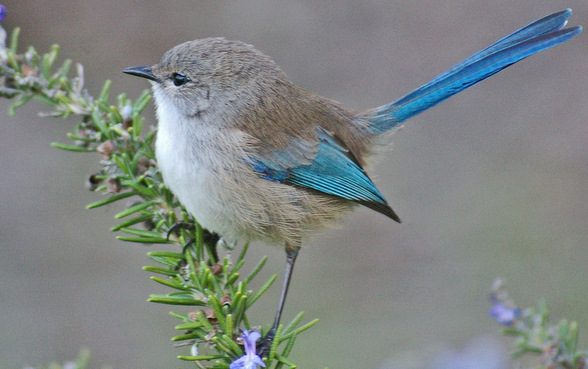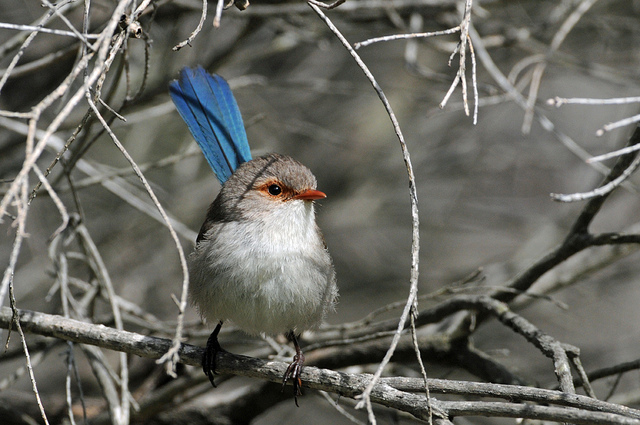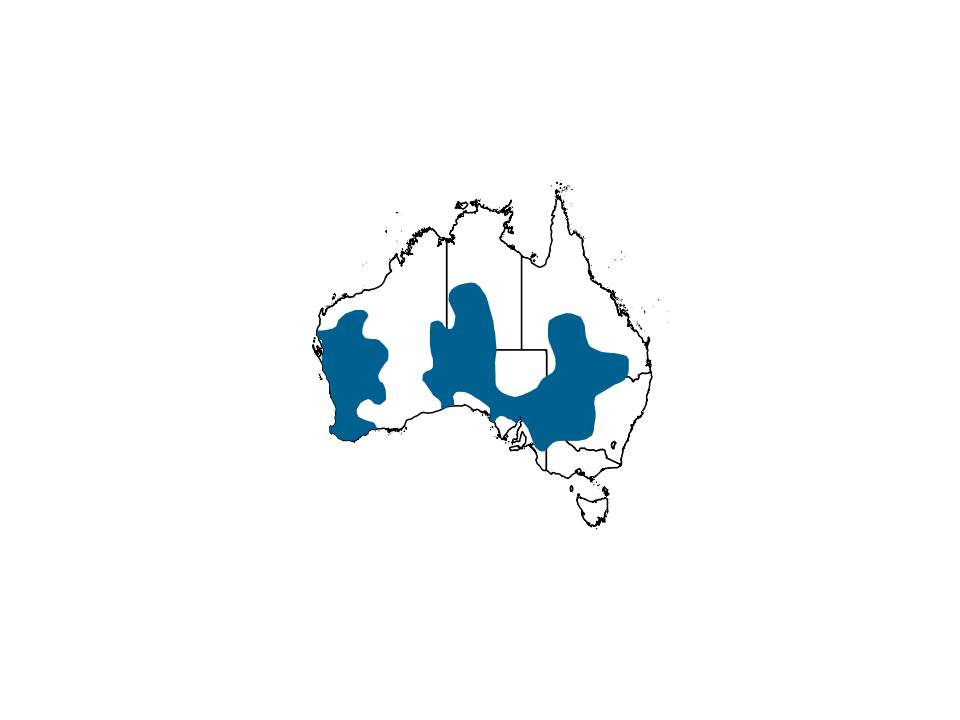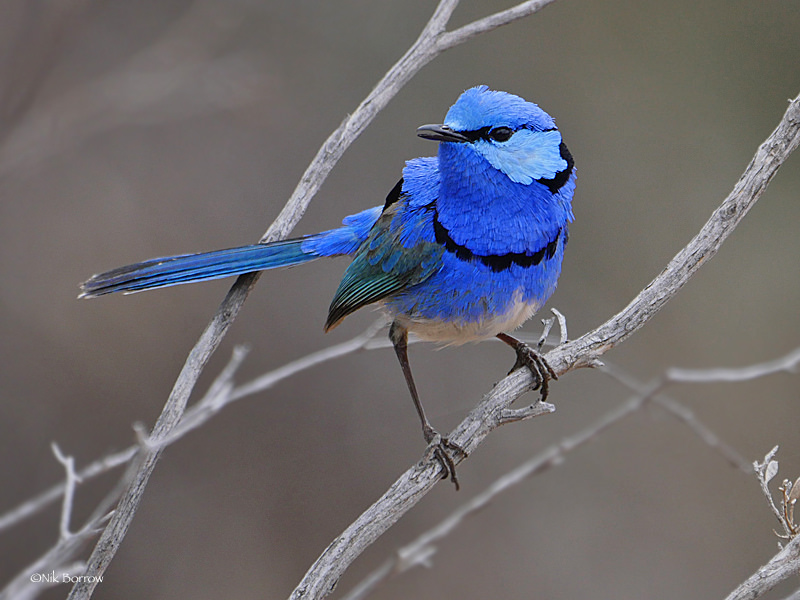Behaviour
Call
A rapid series of slightly metallic, high-pitched pips that blend into an "undulating" call.
Diet
Mostly insects and other small invertebrates. They live in groups which forage together on the ground and in shrubs.
Flight
A series of jaunty hops and bounces.
Breeding
The female builds an oval domed nest usually near the ground in thick cover. Materials include grass, bark spider webs and down. The female is the only member of the group to incubate the eggs, but all members of the group feed the chicks. The female lays 2-4 white eggs speckled reddish brown. The female incubates the eggs for 14-15 days. After hatching the nestlings are fed by the group for 10 -13 days.
Field Guide
Improve your identification skills. Download your Splendid Fairy-Wren field guide here!





